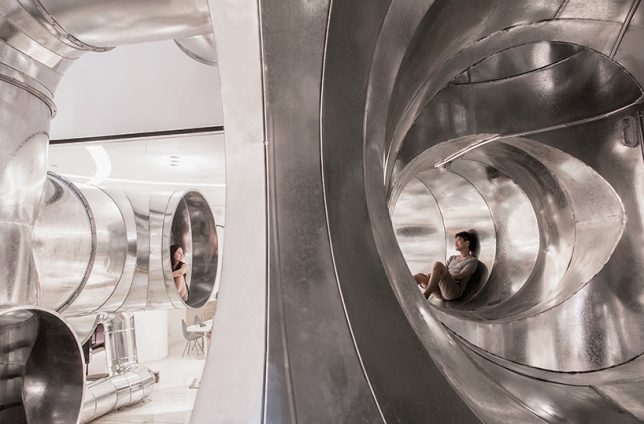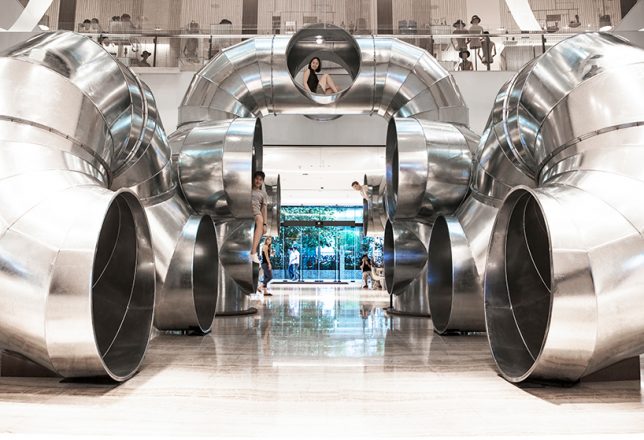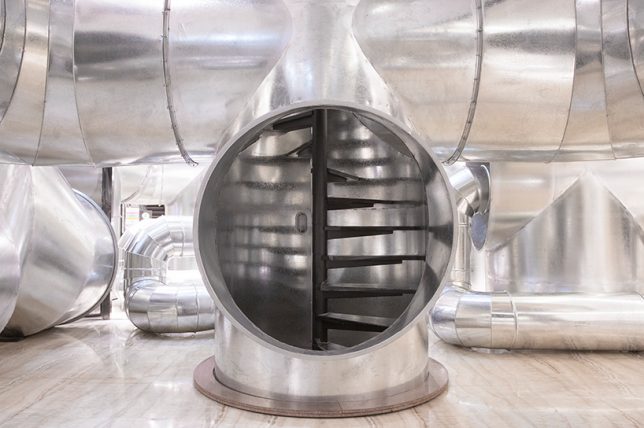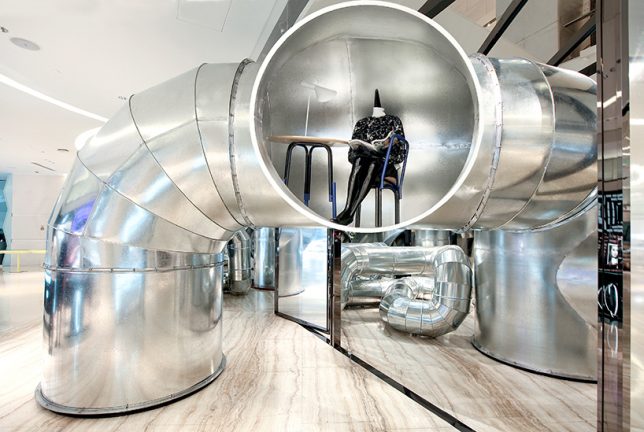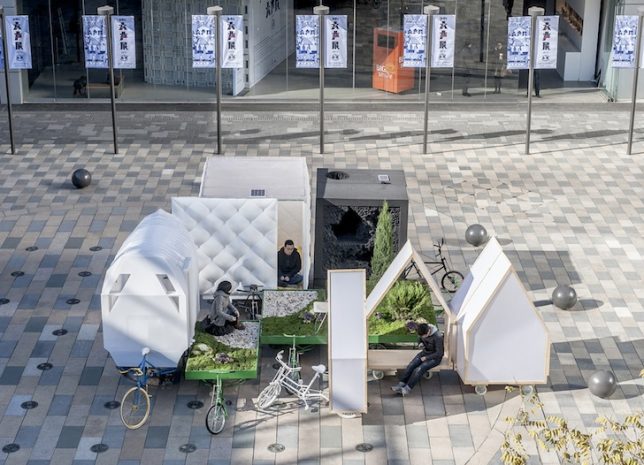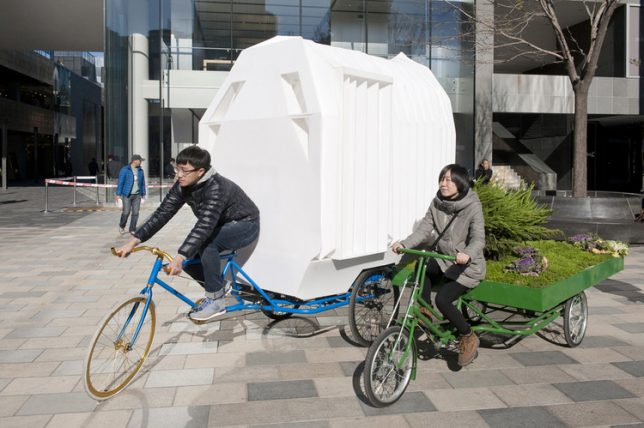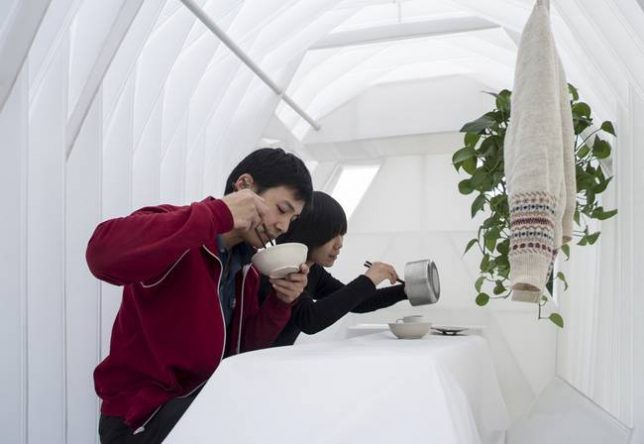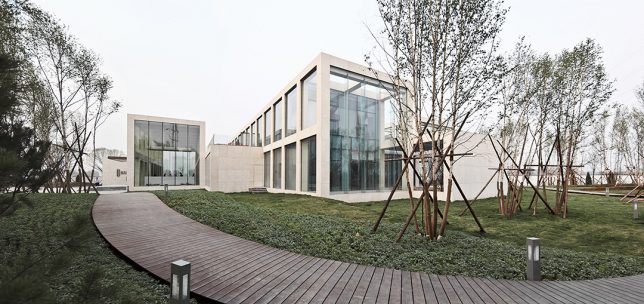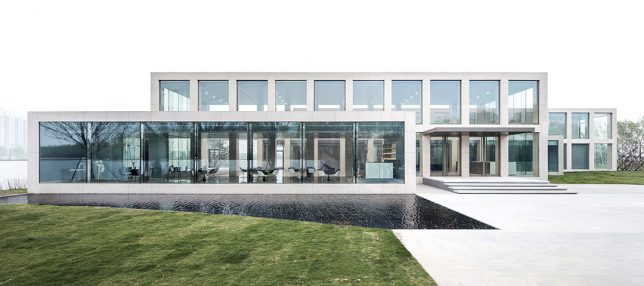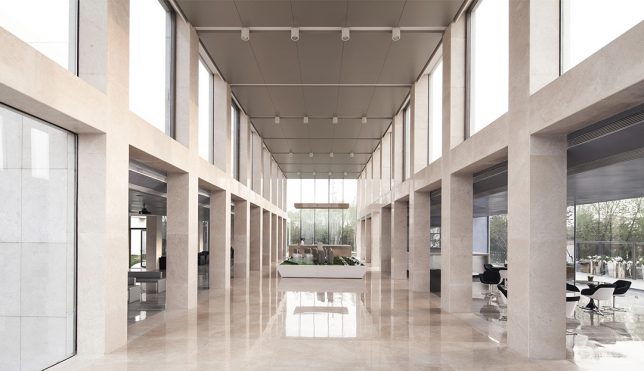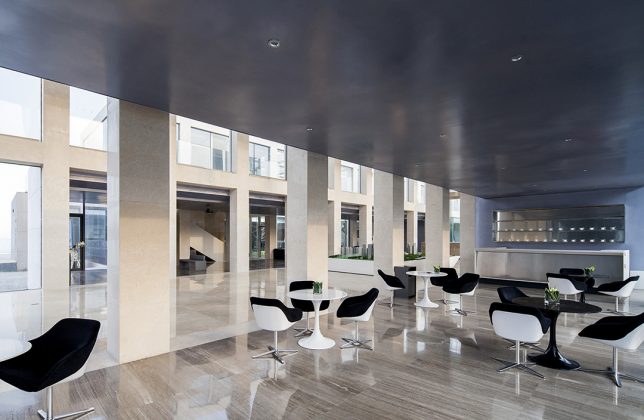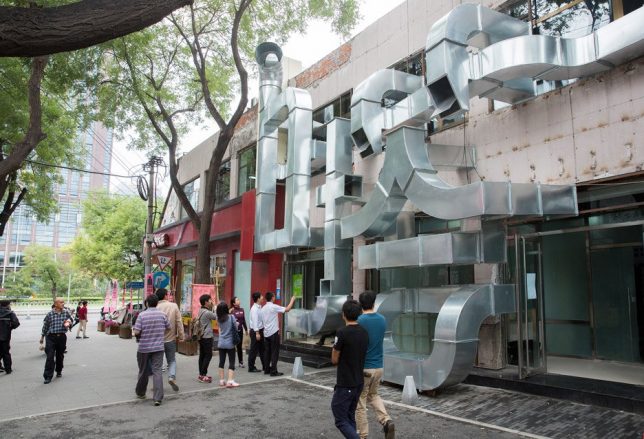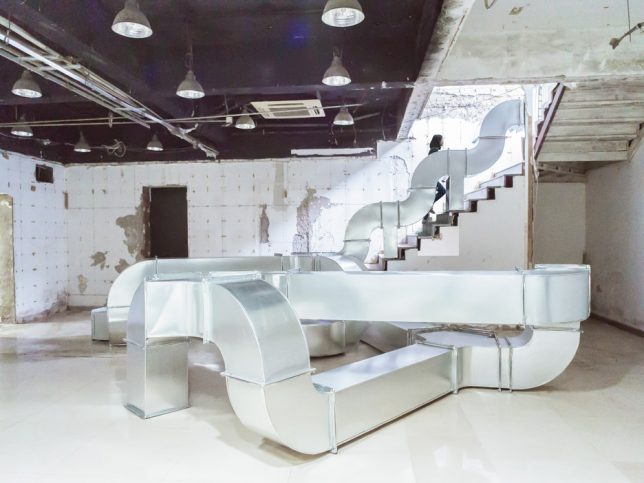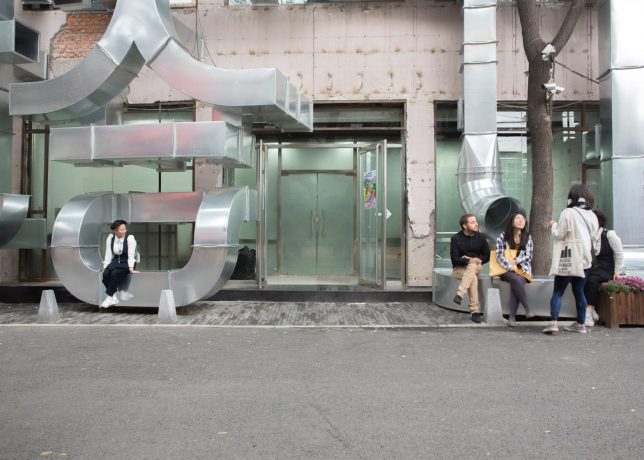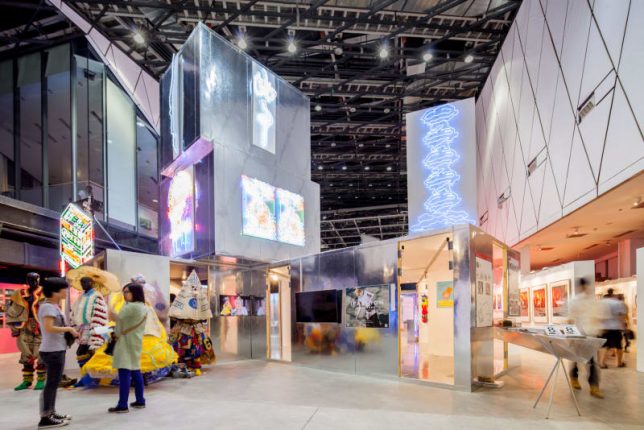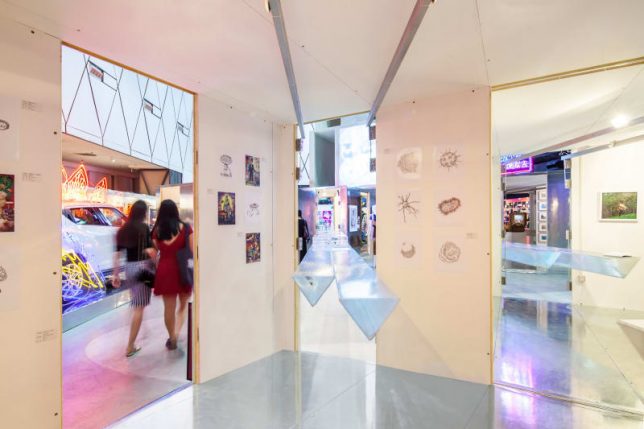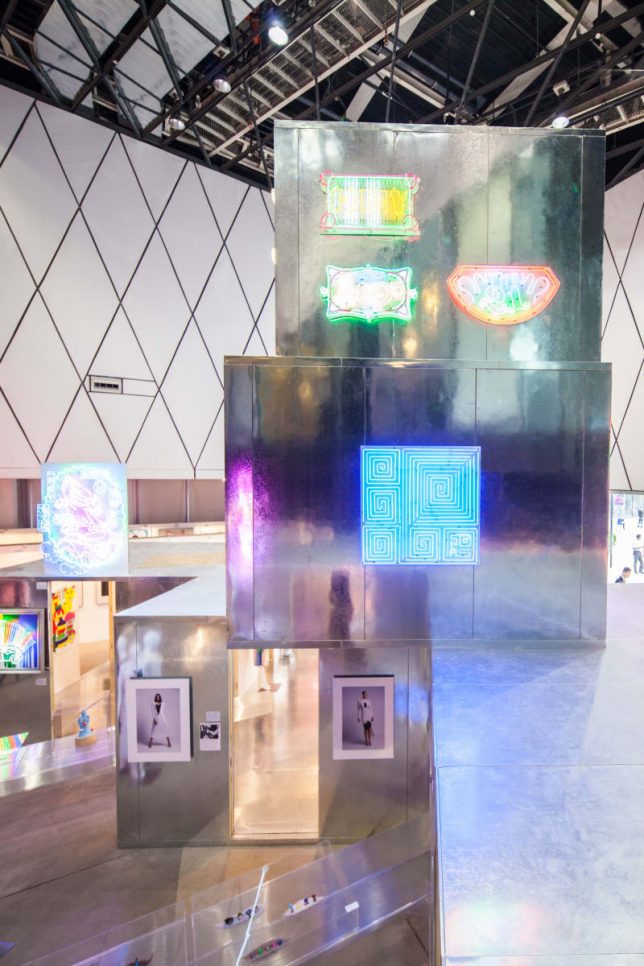Tubular Living: Ventilation Shaft Interiors
Could you live inside a series of ventilation tubes? Realistically, the answer to that question is almost certainly no. They’re usually not tall enough to stand up in, and it would be awfully hard to set up any usable furniture. But there’s so much charm and inspiration to be found in PAO’s exploration of this question, as they installed a ‘tubular living’ system inside three Lane Crawford retail locations. The habitable metal ducts contain staircases, tables, chairs and sofas inside the ‘knots,’ and you can crawl or crouch-walk to explore the whole system. It’s like a giant, ultramodern metal playground for adults.
Tricycle House & Garden
Financially independent students, nomads and people living in poverty often struggle to afford housing of any kind in China, and the whims of the government can force them to uproot themselves at any time. Is off-grid, easily transportable housing one potential solution? PAO created a house and garden system to go, each placed on a platform that can be pulled on a tricycle. The Tricycle House is made of folded polyproylene cut with a CNC router, so the whole thing can expand and contract as needed, and it’s even equipped with a stove, bathtub, water tank, collapsible sink and transforming furniture. The translucent design lets in daylight during the day, but offers privacy at night. Just watch out for people stealing your house while you’re away!
River Heights Pavilion
Can PAO bring the efficient, community-oriented benefits of urban density to suburbia? They certainly tried with the River Heights Pavilion, a development you’d usually see in a city, packing lots of housing into a single block without sacrificing comfort, luxury and looks. Roof decks, courtyards, performance spaces and gardens offer communal space for the residents.
Typographic Facade Made of Ventilation Pipes
What else can ventilation shafts do? Serve as bench seating and shelving, and even communicate messages by contorting itself into typographic shapes. PAO installed metal air conditioning pipes to form giant Chinese characters on the facade of the Tubular Baitasi visitor center during Beijing Design Week 2015, extending the pipes into the interior to serve additional purposes. Outside, passersby can peer into periscope-like sections of open piping to peer into the building.
Get it Louder Installation
The concept behind the Get it Louder exhibition design by PAO is “hun,” a Chinese word referring to a primordial state of disorder before ideas are conceived and organized. The result – a series of stacked rooms made of the firm’s favored ‘Quick-Lock Panels’ tucked within the larger exhibition space – “employs sameness to foster chaos,” as long and narrow transparent tables pierce the open spaces and force pedestrians to divert their paths. The layout leads you into what turns out to be a maze of spaces, forcing you to walk through just about every structure to even get around it.
